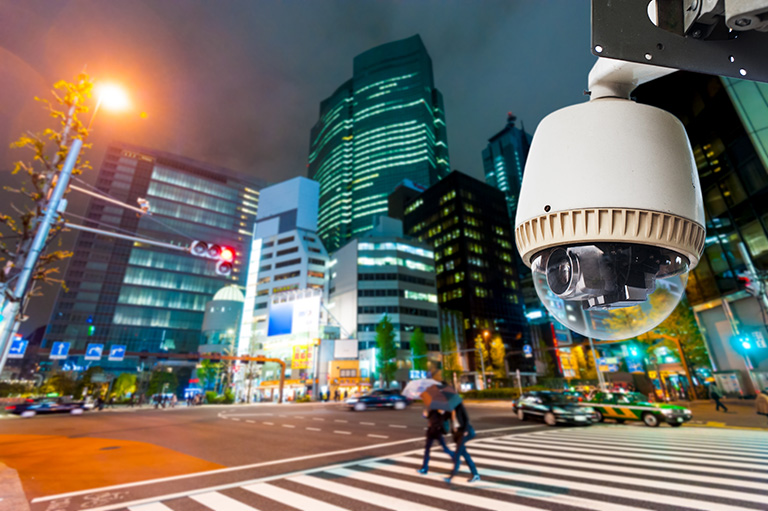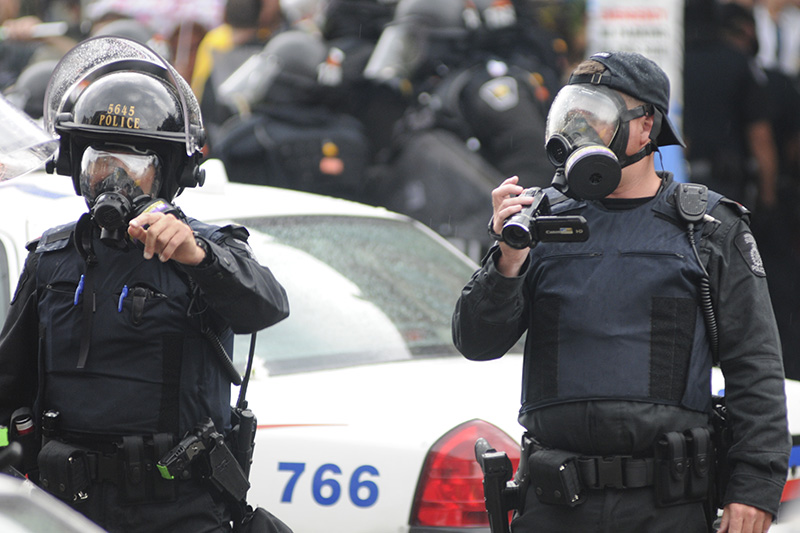Security cameras are now a ubiquitous feature in public places. In 2021, it was estimated that one billion security cameras were being used around the world.
The proliferation of technology for everyday living can be seen through ChatGPT writing term papers or robots serving meals at a restaurant.
Technology can also be used towards less utilitarian ends. Unfortunately, deepfakes – digitally altered images of people – can be used to spread misinformation.
A new edited volume, which I co-edited, considers the use of everyday technologies in the criminal justice system, ranging from detecting deception to web sleuthing to help law enforcement solve crime.
Technology and policing
Consider the use of body-worn cameras by police, as in the fatal shooting of Ontario Provincial Police Const. Greg Pierzchala in December 2022. Footage from his body camera will provide evidence during the trial of his accused killers.
Police investigations have also been aided by private citizen sleuths via technology, who gather evidence to help police identify criminals. This was the case with convicted murderer Luka Magnotta, where an online network identified him in cat torture videos and provided the information to law enforcement agencies.
Another use of technology can be for public surveillance for crime prevention through the application of facial recognition software.

Security cameras are becoming regular features of outdoor public spaces.(© Vasin Lee / Shutterstock)
Security cameras are now a ubiquitous feature in public places. In 2021, it was estimated that one billion security cameras were being used around the world. China is listed as having about 54% of all surveillance cameras.
In 2020, Toronto had approximately 2,000 cameras at city-owned facilities. Security cameras may or may not be used in conjunction with facial recognition software.
Finding faces
Facial recognition uses software to identify or confirm someone’s identity using an image of their face. Captured faces are compared to a database, often for the purposes of crime prevention.
In 2021, it was reported that Toronto police used Clearview AI, a facial recognition software, in 84 investigations, with at least two cases proceeding to prosecution. Once it was discovered by the police chief however, the practice was stopped.
Some retailers have used facial recognition to help reduce theft. In 2022, Josh Soika, an Indigenous man, was confronted by a security guard due to being ‘flagged’ as having stolen previously from the store.
Later, it was determined that Soika was misidentified by the artificial intelligence (AI) used by Canadian Tire for facial recognition. In 2023, Canadian Tire Corporation and its dealers agreed to no longer use facial recognition technology.
In the United States recently, the Federal Trade Commission (FTC) banned the pharmacy chain Rite Aid for five years from using facial recognition software to identify customers who have stolen merchandise or displayed other problematic behaviours.
In some instances, Rite Aid workers would follow ‘identified’ customers around, accuse them of stealing and call police. People of colour were falsely identified at a greater rate than white customers.
It is important to note that someone who has shoplifted in the past isn’t necessarily planning to shoplift again.
The use of facial recognition software in Canada is controversial. In 2021, it was reported that Toronto police used Clearview AI, a facial recognition software, in 84 investigations, with at least two cases proceeding to prosecution. Once it was discovered by the police chief however, the practice was stopped.
Discrimination and AI
Accuracy rates with facial recognition software are above 90%, but that number is greatly reduced within certain demographics. Facial recognition software is documented to misidentify women, racialized people and those between the ages of 18-30 years, with accuracy reduced to 35%.
In February 2023, Porcha Woodruff, a 32-year-old pregnant Black woman from Detroit, was arrested for robbery and carjacking based on a facial recognition match. Police used AI that had run an image of a carjacker caught on video through a mugshot database that contained Woodruff’s photo, and incorrectly matched it.
Woodruff was jailed for 11 hours and went into labour. The charges were dropped, and Woodruff is currently suing the city of Detroit and the Detroit Police Department.
Consequences of misidentification
According to the US-based Innocence Project, over 70% of known wrongful convictions are due to mistaken identification by people as a contributing factor. The Canadian Registry of Wrongful Convictions finds approximately a third of their cases involved false identification.
According to the US-based Innocence Project, over 70% of known wrongful convictions are due to mistaken identification by people as a contributing factor. The Canadian Registry of Wrongful Convictions finds approximately a third of their cases involved false identification.
People can show what is known as ‘own-race bias’ when identifying faces; people are more accurate when identifying faces of their own race than other races.
The misidentification of a perpetrator – whether by a human or an AI programme – can lead to the same consequences: being charged, prosecuted or wrongfully convicted. Technology, as with humans, isn’t always accurate and may succumb to similar biases.
Legislation must keep up to protect people’s rights and privacy. As technology evolves, adequate information and full transparency needs to be provided to the public on how, when and where a technology is in use.
It also is clear that much more research is needed to better understand the impact of technology on the criminal justice system.
This article first appeared on The Conversation, and is republished under a Creative Commons Licence; the original can be read here.
Picture: Police officers at the G20 summit in Toronto in 2010 filming protestors (© arindambanerjee / Shutterstock)


